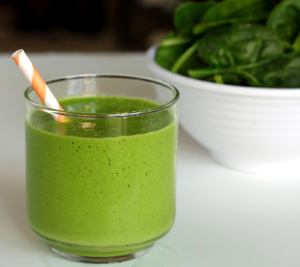Here is the Simplest Approach to Whole Foods Eating
Starting Out:
Breakfast: Choose one breakfast for the week
AM snack: Choose an AM snack
Lunch: Utilize your local natural foods store or co-op deli
1.5 cups whole foods soup + spinach salad with 1/2 cup diced vegetables and 2 T noncreamy dressing
OR 3 oz grilled chicken or salmon with 1/2 cup prepared quinoa salad and 1 cup vegetable dish
Afternoon snack: Choose an afternoon snack
Dinner: Cook three times a week – make a 3-4 serving recipe three nights a week. This will offer 7 nights of meals PLUS 2-5 extra servings to freeze.

 If you need to further modify these smoothies to meet you individual calorie needs (to increase calories, not decrease calories — no one should drop below 1200 calories), feel free to add the following to your smoothie: instead of blending your smoothie with water, blend it with 1 cup unsweetened almond milk (averages 30-40 calories) or 1 cup coconut water, plain (averages 145 calories). I have included the average calories for the recommend portion at the top of each column. You can further adjust your smoothie calorie load using this information as well.
If you need to further modify these smoothies to meet you individual calorie needs (to increase calories, not decrease calories — no one should drop below 1200 calories), feel free to add the following to your smoothie: instead of blending your smoothie with water, blend it with 1 cup unsweetened almond milk (averages 30-40 calories) or 1 cup coconut water, plain (averages 145 calories). I have included the average calories for the recommend portion at the top of each column. You can further adjust your smoothie calorie load using this information as well.



























